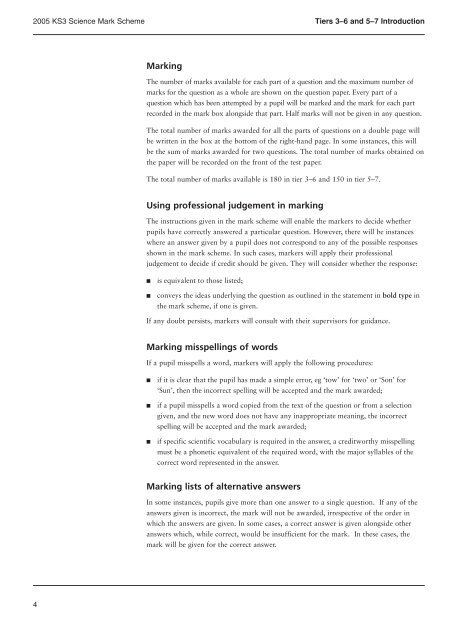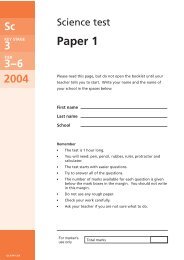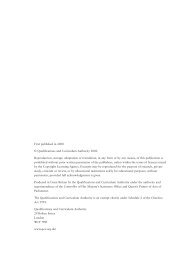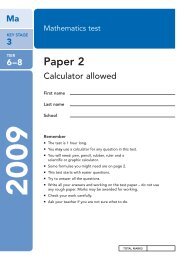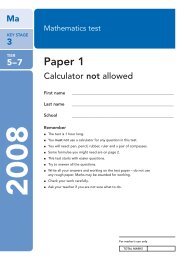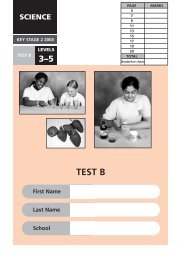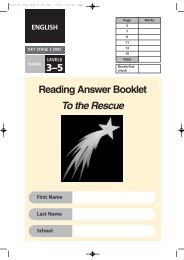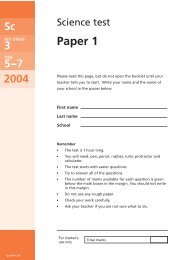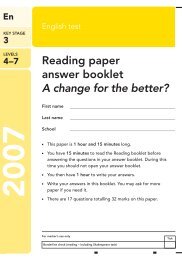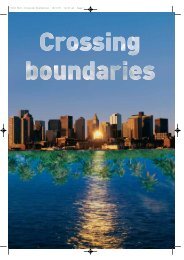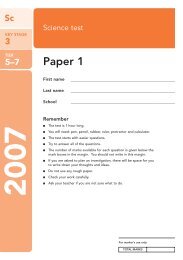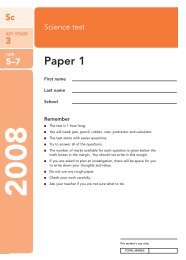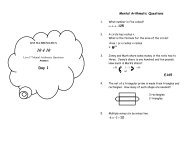Levels 3-7 - Test Papers
Levels 3-7 - Test Papers
Levels 3-7 - Test Papers
You also want an ePaper? Increase the reach of your titles
YUMPU automatically turns print PDFs into web optimized ePapers that Google loves.
2005 KS3 Science Mark Scheme Tiers 3–6 and 5–7 Introduction<br />
Marking<br />
The number of marks available for each part of a question and the maximum number of<br />
marks for the question as a whole are shown on the question paper. Every part of a<br />
question which has been attempted by a pupil will be marked and the mark for each part<br />
recorded in the mark box alongside that part. Half marks will not be given in any question.<br />
The total number of marks awarded for all the parts of questions on a double page will<br />
be written in the box at the bottom of the right-hand page. In some instances, this will<br />
be the sum of marks awarded for two questions. The total number of marks obtained on<br />
the paper will be recorded on the front of the test paper.<br />
The total number of marks available is 180 in tier 3–6 and 150 in tier 5–7.<br />
Using professional judgement in marking<br />
The instructions given in the mark scheme will enable the markers to decide whether<br />
pupils have correctly answered a particular question. However, there will be instances<br />
where an answer given by a pupil does not correspond to any of the possible responses<br />
shown in the mark scheme. In such cases, markers will apply their professional<br />
judgement to decide if credit should be given. They will consider whether the response:<br />
■<br />
■<br />
is equivalent to those listed;<br />
conveys the ideas underlying the question as outlined in the statement in bold type in<br />
the mark scheme, if one is given.<br />
If any doubt persists, markers will consult with their supervisors for guidance.<br />
Marking misspellings of words<br />
If a pupil misspells a word, markers will apply the following procedures:<br />
■<br />
■<br />
■<br />
if it is clear that the pupil has made a simple error, eg ‘tow’ for ‘two’ or ‘Son’ for<br />
‘Sun’, then the incorrect spelling will be accepted and the mark awarded;<br />
if a pupil misspells a word copied from the text of the question or from a selection<br />
given, and the new word does not have any inappropriate meaning, the incorrect<br />
spelling will be accepted and the mark awarded;<br />
if specific scientific vocabulary is required in the answer, a creditworthy misspelling<br />
must be a phonetic equivalent of the required word, with the major syllables of the<br />
correct word represented in the answer.<br />
Marking lists of alternative answers<br />
In some instances, pupils give more than one answer to a single question. If any of the<br />
answers given is incorrect, the mark will not be awarded, irrespective of the order in<br />
which the answers are given. In some cases, a correct answer is given alongside other<br />
answers which, while correct, would be insufficient for the mark. In these cases, the<br />
mark will be given for the correct answer.<br />
4


